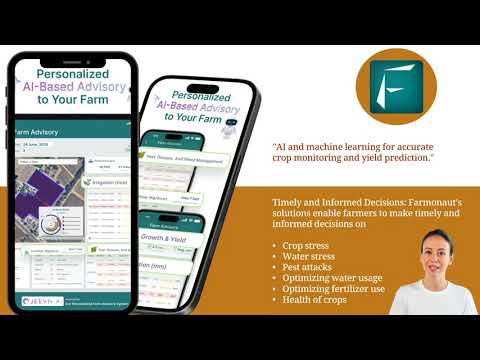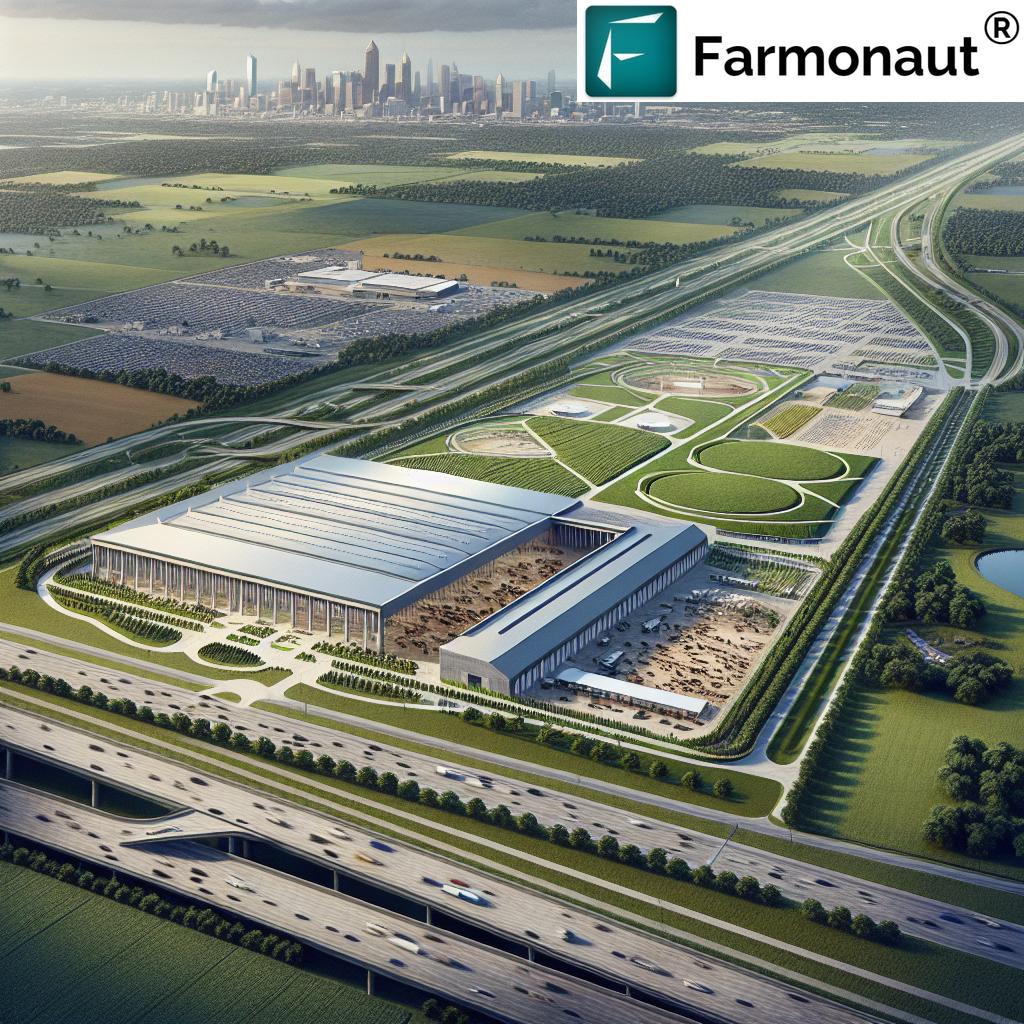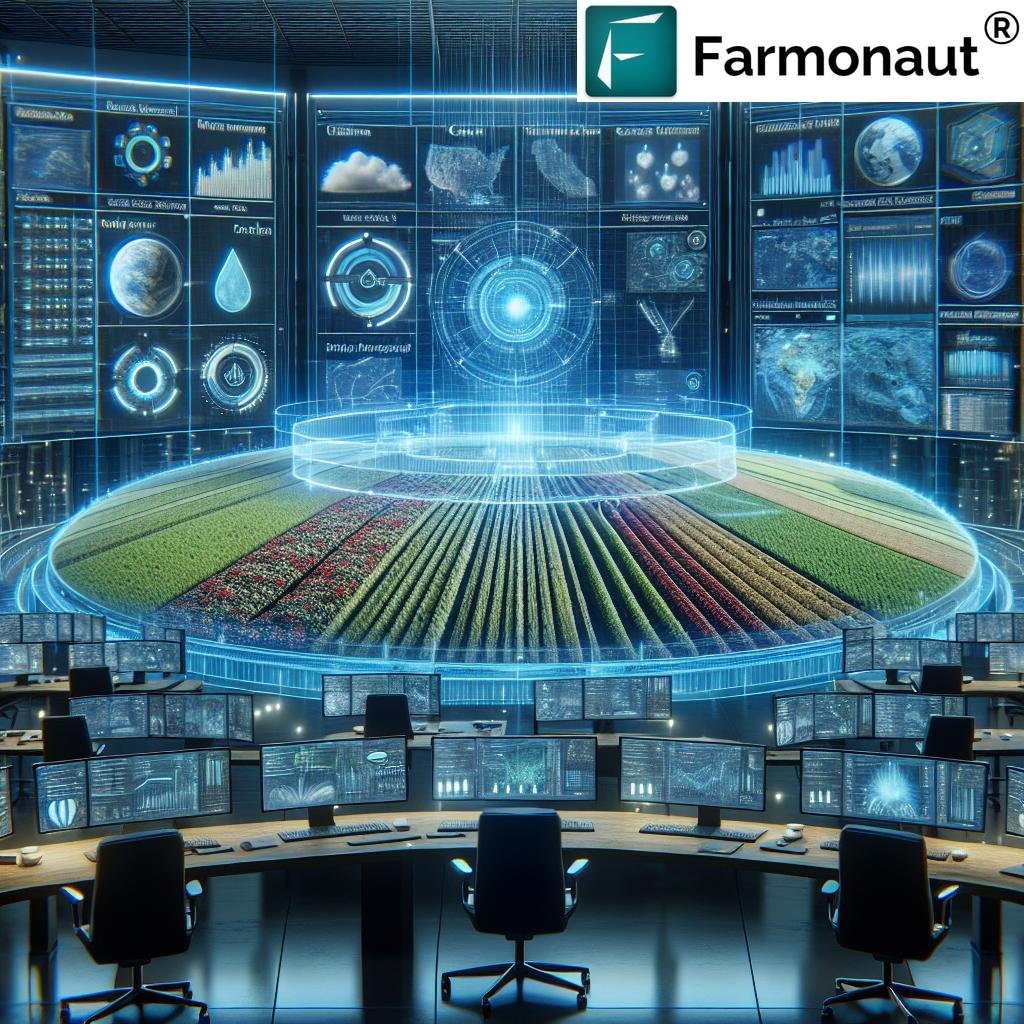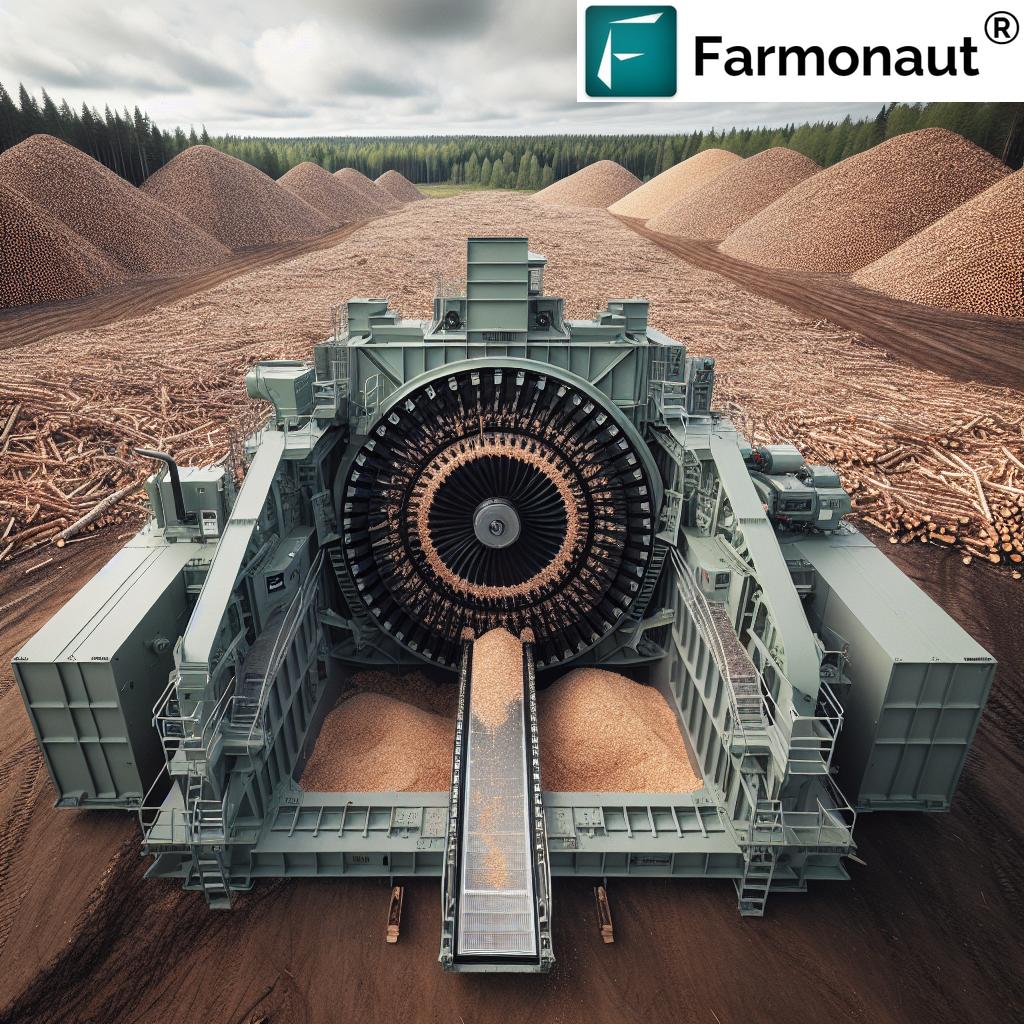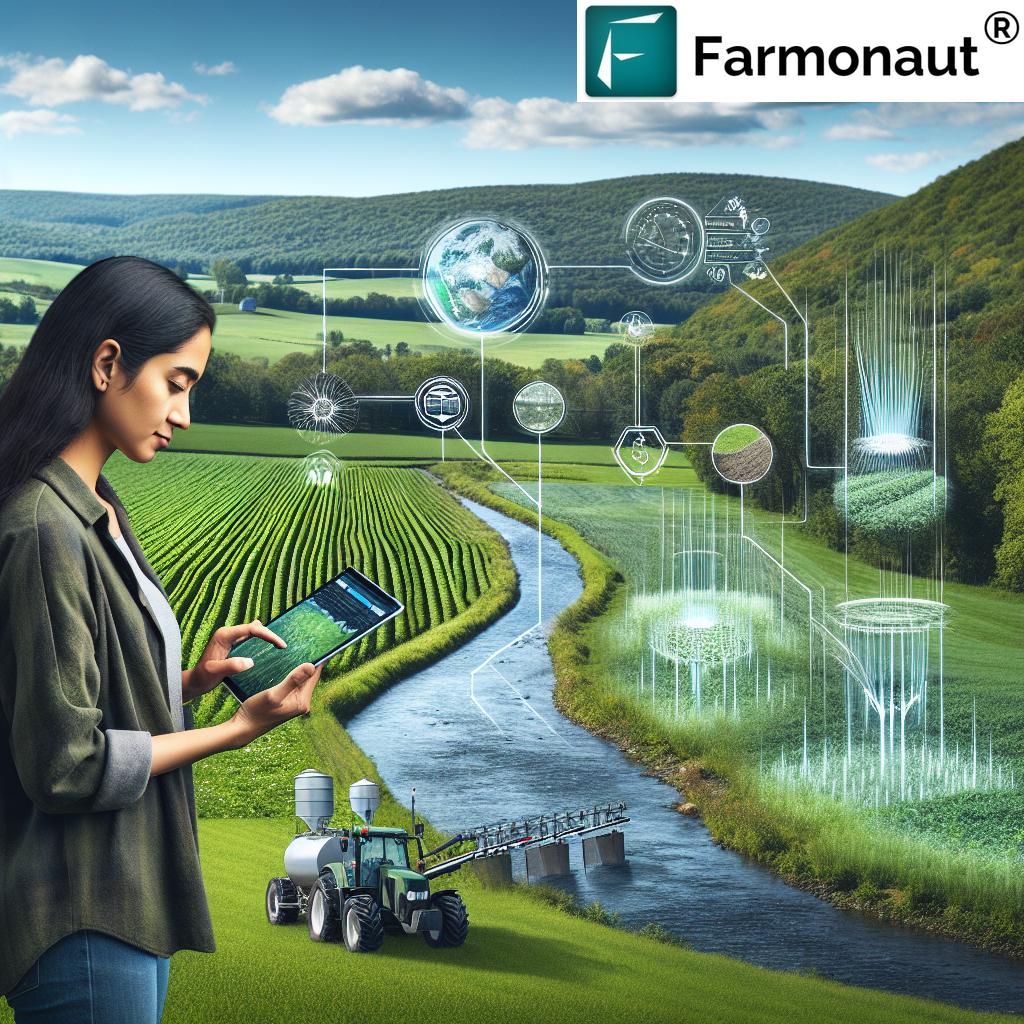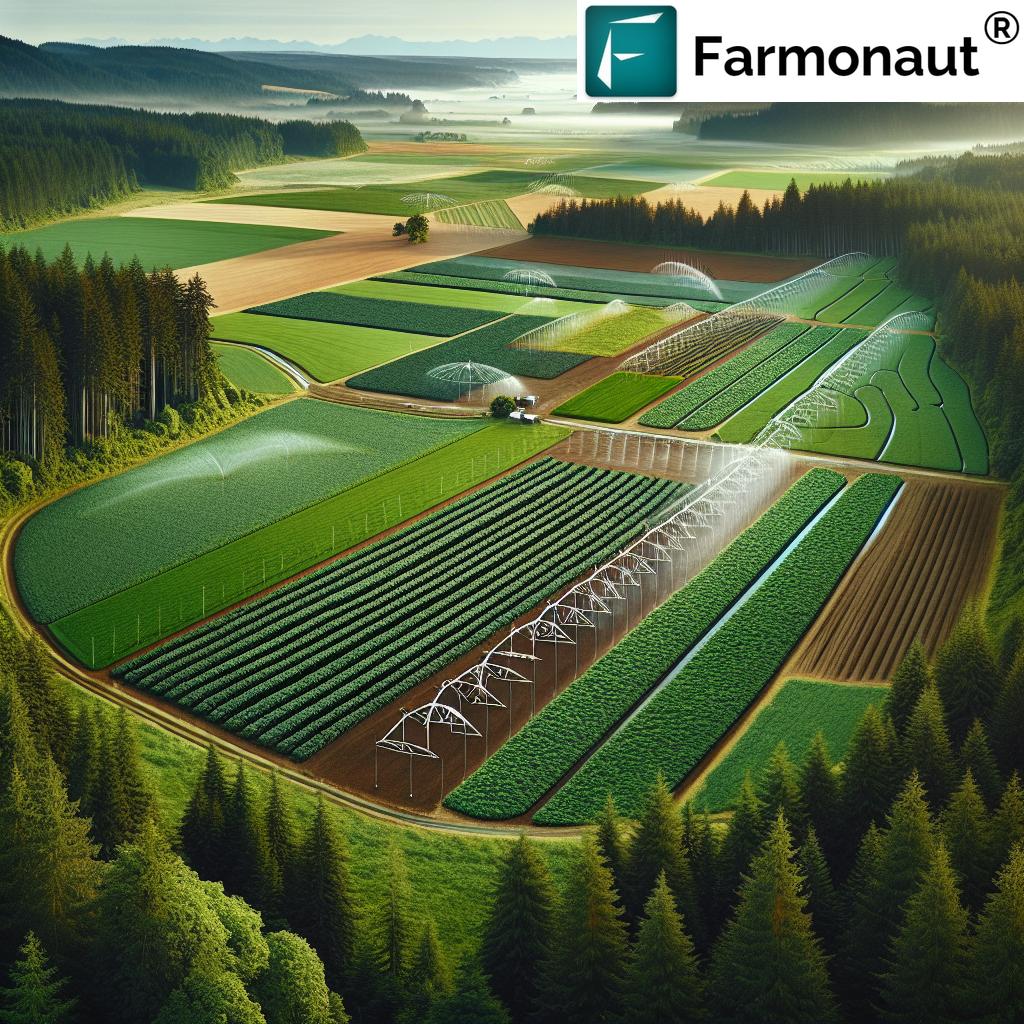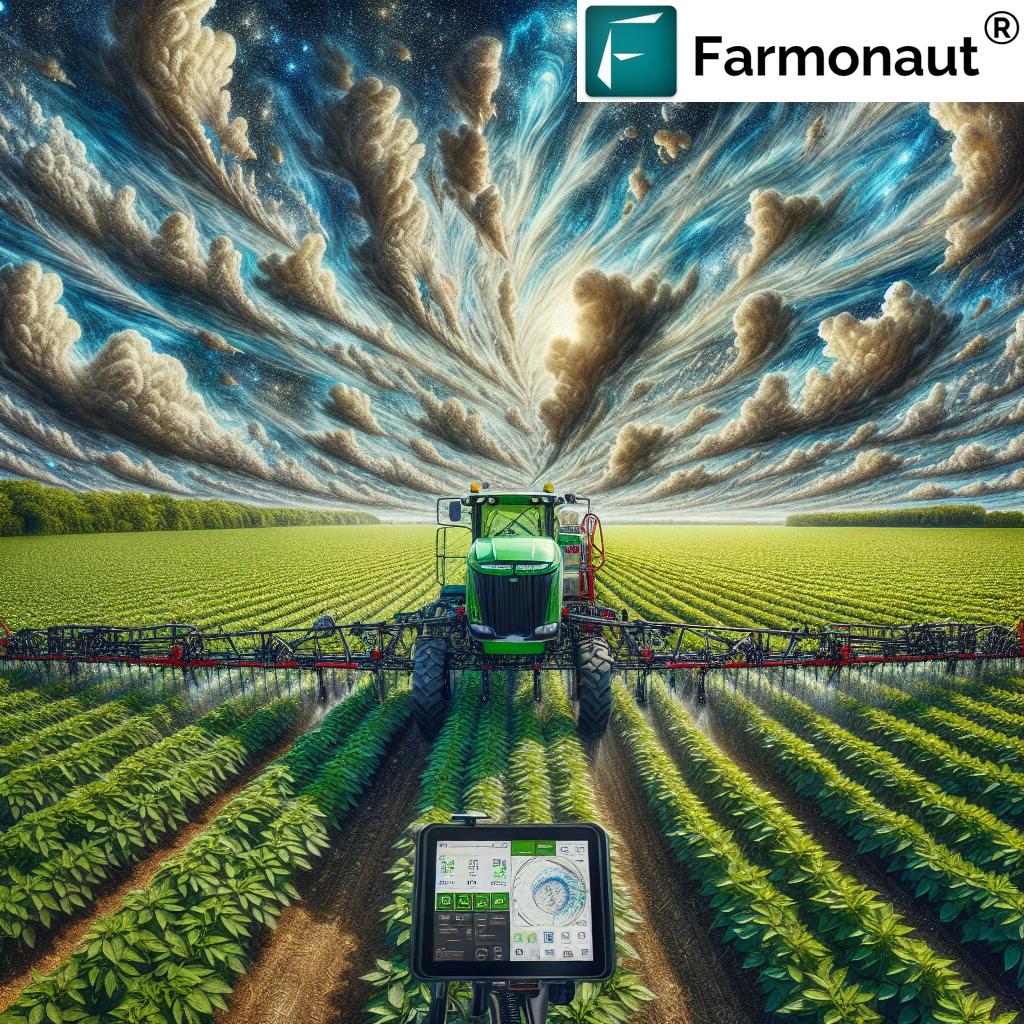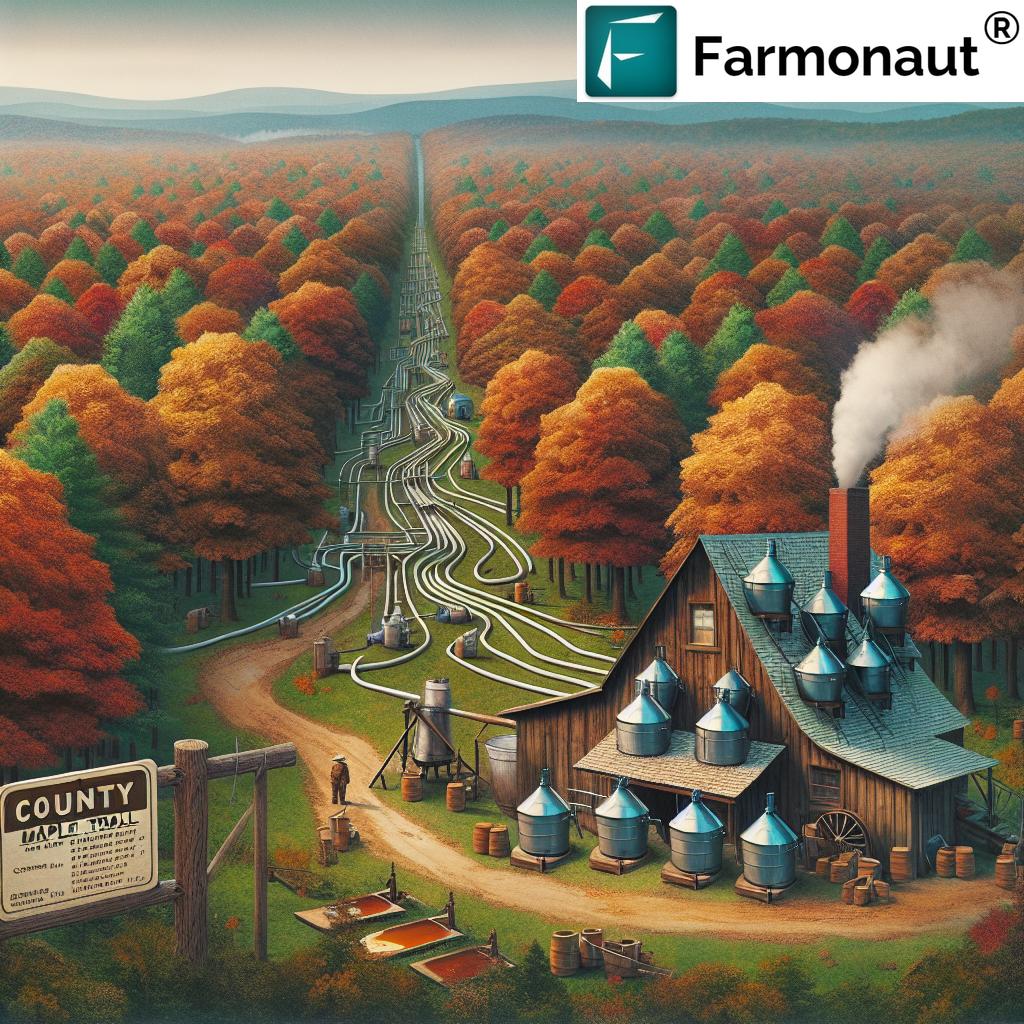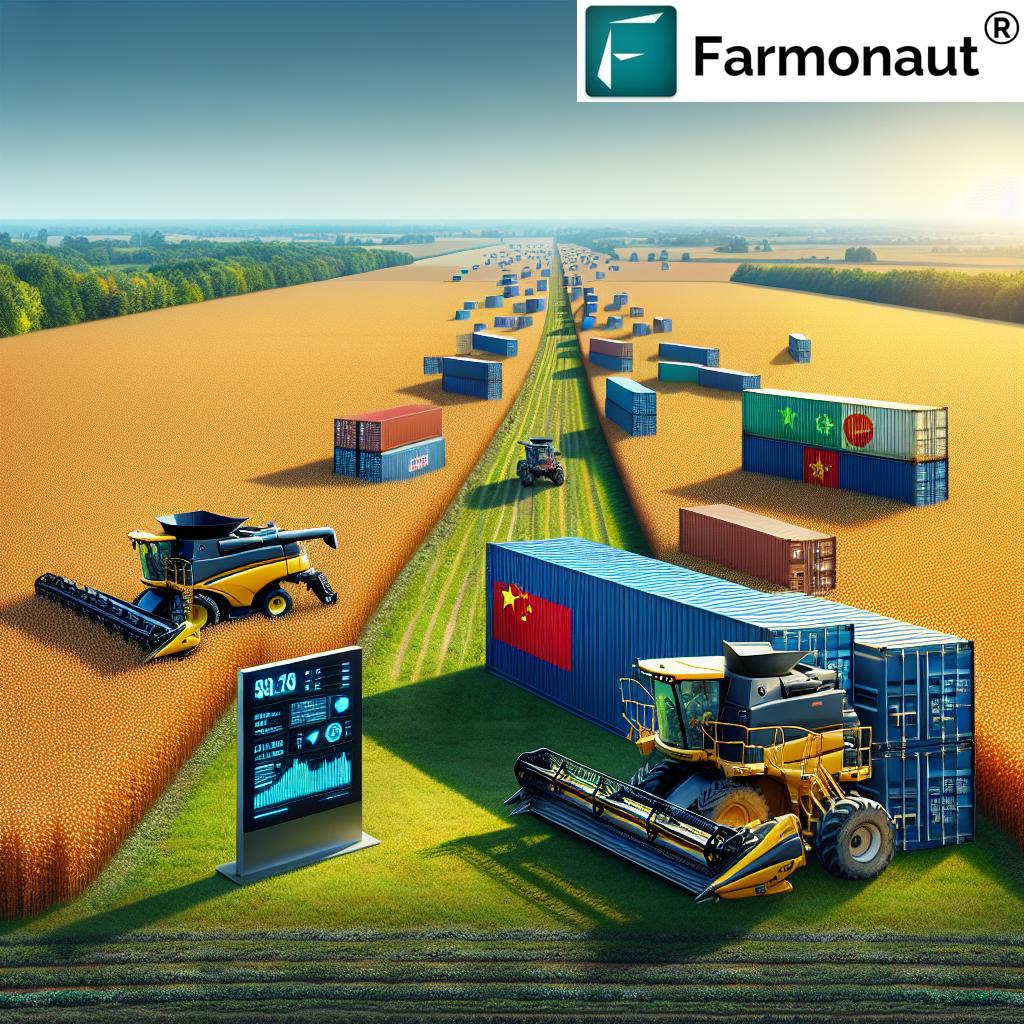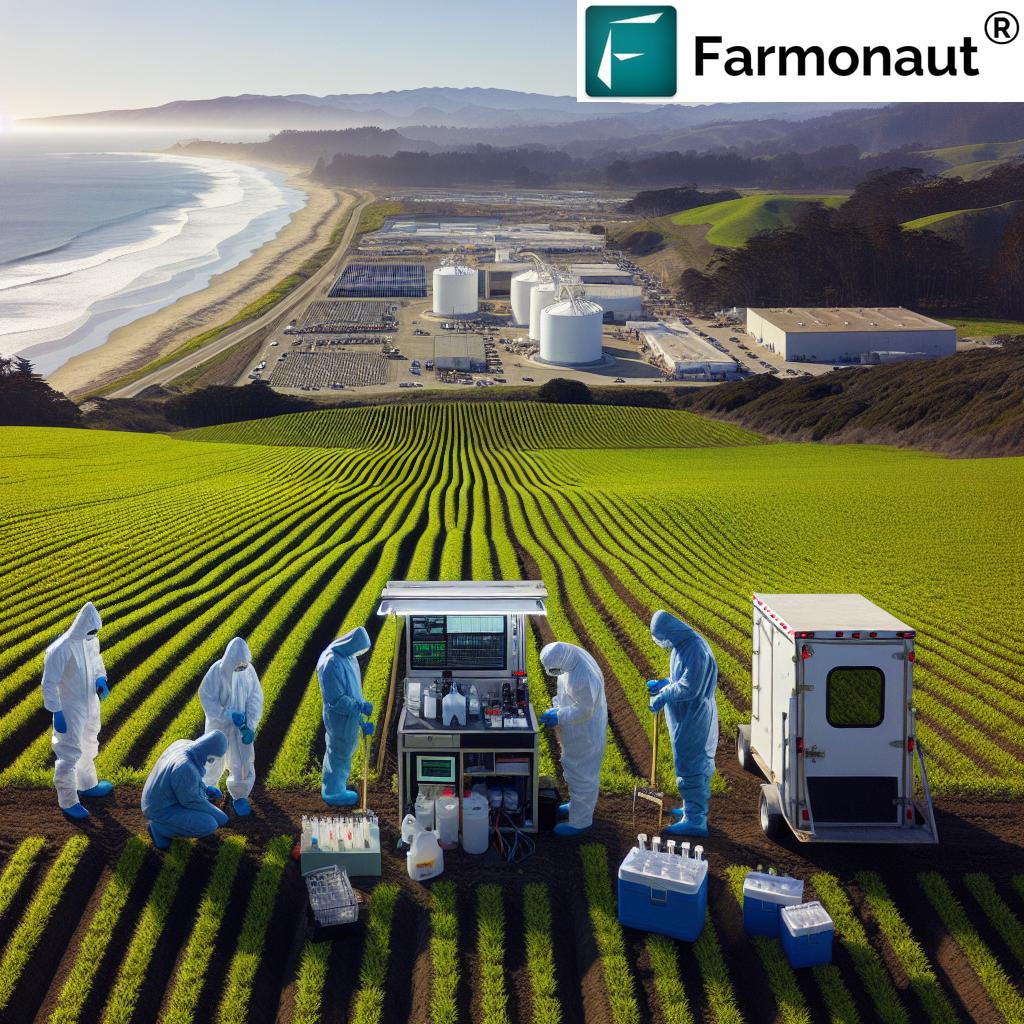Revolutionizing Precision Farming: Top Agricultural Equipment and GIS Technology Trends for US Farmers
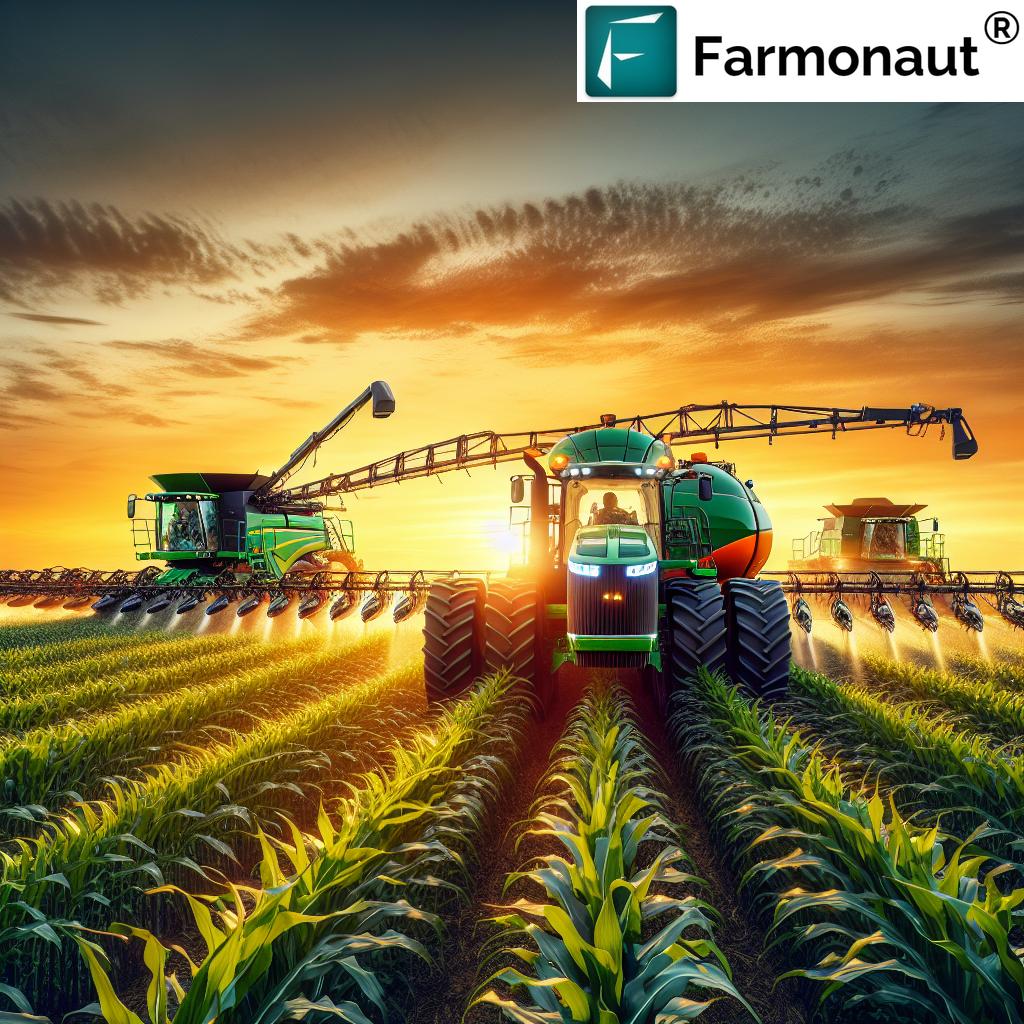
“Precision agriculture technology can increase crop yields by up to 30% while reducing water usage by 20-50%.”
Welcome to our comprehensive guide on the latest advancements in farm equipment and precision agriculture technology. As we delve into the world of modern farming, we’ll explore cutting-edge tools and machinery that are essential for today’s agricultural industry. From state-of-the-art tractors and attachments to innovative sprayers and applicators, we’ll cover it all. Join us as we uncover how GIS and remote sensing applications are revolutionizing crop management and yield optimization.
In this blog post, we’ll provide valuable insights into industry trends, including smart farming solutions and data-driven decision-making processes. Whether you’re interested in tillage equipment, grain handling systems, or advanced irrigation technologies, we’ve got you covered. We’ll also examine sustainable farming practices, precision agriculture software, and the integration of IoT in field operations.
Our expert analysis aims to provide farmers, agronomists, and agribusiness professionals with the information they need to enhance productivity and efficiency. Let’s explore how these technological advancements are shaping the future of agriculture and driving the industry forward.
The Evolution of Farm Equipment
The agricultural industry has come a long way from traditional farming methods. Today, we’re witnessing a revolution in farm equipment that’s transforming the way we cultivate crops and manage livestock. Let’s take a closer look at some of the most significant advancements in agricultural machinery.
Smart Tractors and Autonomous Vehicles
One of the most exciting developments in farm equipment is the emergence of smart tractors and autonomous vehicles. These high-tech machines are equipped with GPS guidance systems, sensors, and AI-powered decision-making capabilities. Here are some key features:
- Precision steering and auto-guidance
- Real-time data collection and analysis
- Remote monitoring and control
- Fuel efficiency optimization
- Integration with farm management software
With these advanced features, smart tractors can operate with minimal human intervention, improving efficiency and reducing labor costs. Some models even have the capability to work 24/7, maximizing productivity during critical planting and harvesting seasons.
Precision Sprayers and Applicators
Precision spraying technology has revolutionized the way farmers apply fertilizers, pesticides, and other crop inputs. These state-of-the-art sprayers and applicators offer:
- Variable rate application
- Section control to minimize overlap
- Nozzle control for optimal droplet size
- Integration with GIS and mapping systems
- Real-time weather monitoring
By using precision sprayers, farmers can significantly reduce chemical usage while improving application accuracy. This not only saves money but also minimizes environmental impact and promotes sustainable farming practices.
Advanced Harvesting Equipment
Modern harvesting equipment has come a long way in terms of efficiency and technology integration. Today’s combines and harvesters feature:
- Automated threshing and separating systems
- Yield monitoring and mapping
- Real-time moisture sensing
- Intelligent header height control
- Integrated grain quality analysis
These advanced features enable farmers to maximize their harvest while minimizing losses and maintaining high-quality standards. The data collected during harvesting can also be used to inform future planting decisions and optimize crop management strategies.
GIS and Remote Sensing in Agriculture
Geographic Information Systems (GIS) and remote sensing technologies have become indispensable tools in modern agriculture. These technologies provide farmers with valuable insights into their fields, enabling data-driven decision-making and precision farming practices.
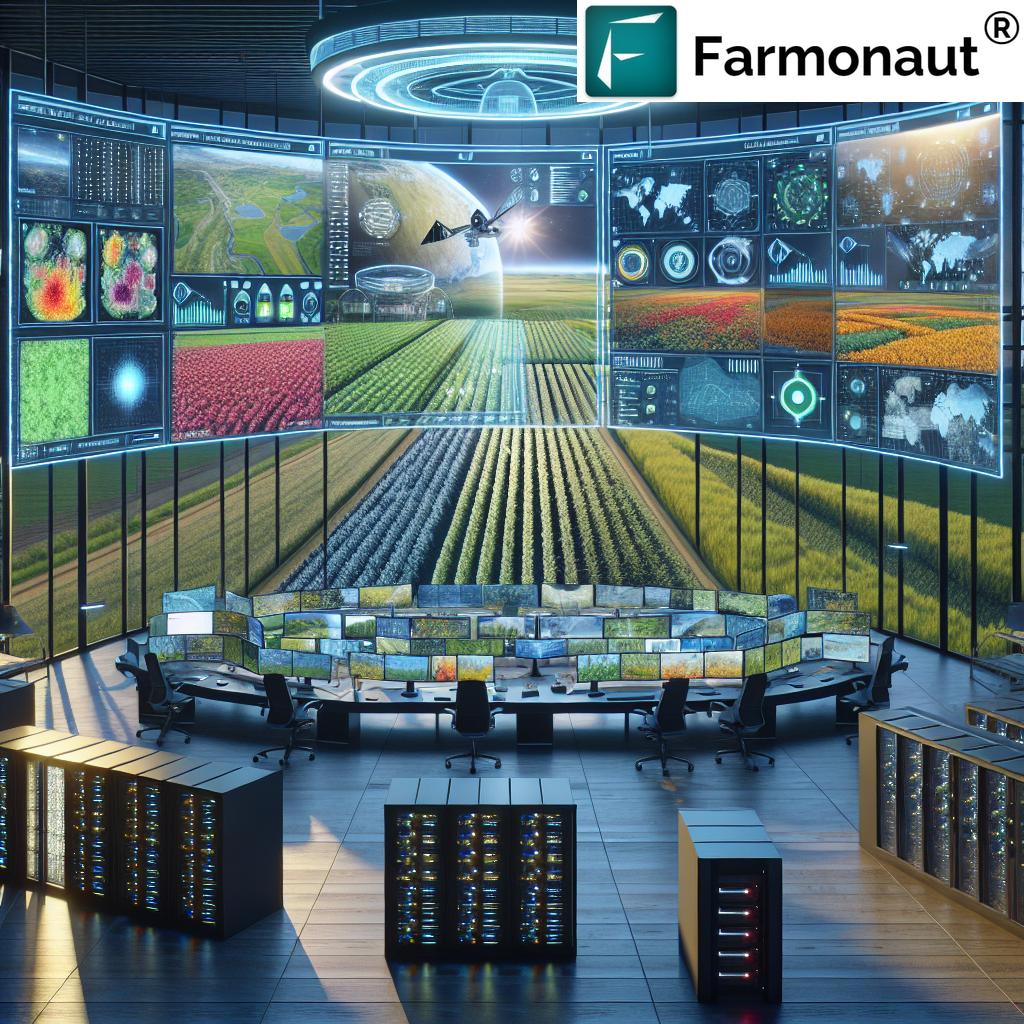
Satellite Imagery and Crop Monitoring
Satellite-based crop monitoring has transformed the way farmers observe and manage their fields. With access to high-resolution satellite imagery, farmers can:
- Track crop health and growth patterns
- Detect early signs of disease or pest infestation
- Identify areas of nutrient deficiency
- Monitor soil moisture levels
- Estimate crop yields
Companies like Farmonaut are at the forefront of this technology, offering advanced satellite-based farm management solutions. Through their web app, farmers can access real-time data and insights about their crops, enabling them to make informed decisions and optimize their farming practices.
Drone Technology in Agriculture
Drones have become increasingly popular in agriculture, offering a cost-effective way to gather high-resolution imagery and data. Some key applications of drone technology in farming include:
- Crop scouting and monitoring
- Precision spraying of pesticides and fertilizers
- 3D mapping of fields
- Plant counting and yield estimation
- Livestock monitoring
Drones equipped with multispectral or thermal cameras can provide detailed insights into crop health, water stress, and nutrient levels, allowing farmers to address issues quickly and efficiently.
GPS and Precision Agriculture
Global Positioning System (GPS) technology has become an integral part of precision agriculture. GPS-enabled farm equipment allows for:
- Accurate field mapping and boundary creation
- Precise planting and seeding
- Targeted application of inputs
- Automated steering and guidance
- Detailed record-keeping of field operations
By leveraging GPS technology, farmers can minimize overlaps and skips in their field operations, leading to significant savings in time, fuel, and inputs.
“GIS-based farm management systems can improve overall farm productivity by 15-20% through data-driven decision making.”
IoT and Smart Farming Solutions
The Internet of Things (IoT) has ushered in a new era of smart farming, connecting various devices and sensors to create a comprehensive farm management ecosystem. Let’s explore some of the key IoT applications in agriculture.
Soil Sensors and Weather Stations
IoT-enabled soil sensors and weather stations provide real-time data on crucial environmental factors, including:
- Soil moisture content
- Soil temperature and pH levels
- Air temperature and humidity
- Precipitation and wind speed
- Solar radiation
This data helps farmers make informed decisions about irrigation, fertilization, and crop protection, leading to more efficient resource use and improved crop yields.
Smart Irrigation Systems
Smart irrigation systems use a combination of sensors, weather data, and AI algorithms to optimize water usage in agriculture. These systems offer:
- Automated irrigation scheduling
- Variable rate irrigation based on crop needs
- Remote monitoring and control
- Integration with weather forecasts
- Water usage tracking and reporting
By implementing smart irrigation systems, farmers can significantly reduce water consumption while maintaining or even improving crop yields.
Livestock Monitoring and Management
IoT technology is also transforming livestock management. Smart livestock monitoring systems provide:
- Real-time health monitoring of individual animals
- Automated feeding and milking systems
- Tracking of animal movement and behavior
- Early detection of diseases or distress
- Optimization of breeding cycles
These technologies not only improve animal welfare but also increase productivity and efficiency in livestock operations.
Data-Driven Agriculture: From Field to Cloud
The integration of data analytics and cloud computing in agriculture has opened up new possibilities for farm management and decision-making. Let’s explore how data is revolutionizing the agricultural industry.
Farm Management Software
Modern farm management software platforms offer a comprehensive suite of tools for managing all aspects of farm operations. Key features include:
- Field mapping and crop planning
- Input and yield tracking
- Financial management and budgeting
- Equipment maintenance scheduling
- Integration with IoT devices and sensors
These software solutions provide a centralized hub for farm data, enabling farmers to make data-driven decisions and streamline their operations.
Big Data Analytics in Agriculture
The agricultural industry is generating vast amounts of data from various sources, including equipment sensors, satellite imagery, and weather stations. Big data analytics helps farmers make sense of this information by:
- Identifying patterns and trends in crop performance
- Predicting pest and disease outbreaks
- Optimizing resource allocation
- Forecasting yields and market demand
- Improving supply chain efficiency
By leveraging big data analytics, farmers can gain valuable insights that lead to more informed decision-making and improved farm performance.
Artificial Intelligence and Machine Learning
AI and machine learning algorithms are being applied to various aspects of agriculture, including:
- Crop and weed identification
- Disease detection and diagnosis
- Predictive maintenance for farm equipment
- Automated grading and sorting of produce
- Optimization of planting and harvesting schedules
These technologies are helping farmers automate complex decision-making processes and improve overall farm efficiency.
Farmonaut’s API and API Developer Docs provide developers and businesses with access to powerful satellite and weather data, enabling the creation of innovative agricultural solutions.
Sustainable Farming Practices and Technology
As the agricultural industry faces increasing pressure to reduce its environmental impact, sustainable farming practices and technologies are becoming more important than ever. Let’s explore some of the key trends in this area.
Precision Agriculture for Resource Optimization
Precision agriculture technologies help farmers optimize their use of resources such as water, fertilizers, and pesticides. Some key benefits include:
- Reduced environmental impact
- Lower input costs
- Improved crop quality and yields
- Minimized soil compaction
- Enhanced traceability of food production
By adopting precision agriculture practices, farmers can achieve more sustainable production while maintaining profitability.
Conservation Tillage and No-Till Farming
Conservation tillage and no-till farming practices are gaining popularity due to their environmental benefits. These methods involve:
- Minimal soil disturbance
- Retention of crop residues on the soil surface
- Reduced erosion and improved soil health
- Enhanced water retention
- Increased soil organic matter
Advanced tillage equipment and planting machinery are designed to support these sustainable farming practices, allowing farmers to implement them efficiently.
Renewable Energy in Agriculture
The adoption of renewable energy sources in agriculture is on the rise. Some popular applications include:
- Solar-powered irrigation systems
- Wind turbines for on-farm electricity generation
- Biogas digesters for waste management and energy production
- Electric farm vehicles and equipment
- Geothermal heating for greenhouses
These renewable energy solutions help reduce the carbon footprint of farming operations while often providing long-term cost savings.
The Future of Agricultural Equipment and Technology
As we look to the future, several emerging trends are set to shape the agricultural equipment and technology landscape. Let’s explore some of these exciting developments.
Robotics and Automation
Robotics and automation are poised to play an increasingly important role in agriculture. Some promising applications include:
- Autonomous harvesting robots
- Robotic weeders and precision cultivators
- Automated milking systems
- Drone swarms for crop monitoring and spraying
- Robotic greenhouse management
These technologies have the potential to address labor shortages and further improve efficiency in farming operations.
Vertical Farming and Controlled Environment Agriculture
Vertical farming and controlled environment agriculture are gaining traction, especially in urban areas. These systems offer:
- Year-round crop production
- Reduced water and land usage
- Protection from weather extremes and pests
- Precise control over growing conditions
- Reduced transportation costs for urban markets
Advanced lighting, hydroponics, and environmental control systems are key technologies driving the growth of this sector.
Blockchain in Agriculture
Blockchain technology is being explored for various applications in agriculture, including:
- Supply chain traceability
- Food safety and quality assurance
- Smart contracts for agricultural transactions
- Crop insurance and risk management
- Tokenization of farm assets
Blockchain has the potential to increase transparency and efficiency across the agricultural value chain.
Comparison of Top Agricultural Equipment and GIS Technology Trends
| Technology/Equipment | Key Features | Estimated Adoption Rate (%) | Potential Yield Increase (%) | Environmental Impact |
|---|---|---|---|---|
| AI-powered tractors | Autonomous operation, precision steering, real-time data analysis | 15 | 10-20 | Medium |
| Precision sprayers | Variable rate application, section control, nozzle optimization | 30 | 5-15 | High |
| Drone-based crop monitoring | High-resolution imagery, multispectral analysis, rapid field assessment | 25 | 8-12 | Low |
| IoT soil sensors | Real-time soil data, moisture monitoring, nutrient tracking | 40 | 10-25 | Medium |
| Smart irrigation systems | Automated scheduling, weather integration, variable rate application | 35 | 15-30 | High |
This table provides a comprehensive overview of some of the most impactful agricultural technologies and equipment, highlighting their key features, adoption rates, potential yield increases, and environmental impact. It’s clear that these innovations are not only improving productivity but also contributing to more sustainable farming practices.
Embracing Digital Agriculture with Farmonaut
As we’ve explored the various advancements in agricultural equipment and technology, it’s evident that digital solutions play a crucial role in modern farming. Farmonaut is at the forefront of this digital revolution, offering cutting-edge satellite-based farm management solutions that empower farmers to make data-driven decisions.
With Farmonaut’s platform, farmers can access:
- Real-time crop health monitoring
- AI-powered advisory systems
- Weather forecasts and alerts
- Resource management tools
- Yield prediction and optimization
By leveraging these tools, farmers can enhance their productivity, reduce resource waste, and implement more sustainable farming practices. Farmonaut’s solutions are designed to be user-friendly and accessible, making advanced agricultural technology available to farms of all sizes.
To experience the benefits of Farmonaut’s technology firsthand, consider downloading their mobile apps:
Conclusion
The agricultural industry is undergoing a profound transformation, driven by advancements in equipment, GIS technology, and data-driven solutions. From smart tractors and precision sprayers to satellite-based crop monitoring and IoT sensors, these innovations are reshaping the way we approach farming.
As we’ve explored in this blog post, the benefits of adopting these technologies are numerous:
- Increased crop yields and quality
- Improved resource efficiency
- Enhanced environmental sustainability
- Better farm management and decision-making
- Reduced labor costs and increased productivity
For US farmers looking to stay competitive in an ever-evolving industry, embracing these technological advancements is crucial. By integrating precision agriculture tools, GIS technology, and data analytics into their operations, farmers can optimize their practices, reduce costs, and improve overall farm performance.
As we look to the future, it’s clear that the trend towards digital agriculture will continue to accelerate. Emerging technologies like robotics, vertical farming, and blockchain promise to bring even more innovation to the sector. By staying informed and open to adopting new solutions, farmers can position themselves for success in the years to come.
Remember, the journey towards precision farming and technological integration doesn’t have to be overwhelming. Start by identifying the areas of your operation that could benefit most from these advancements, and consider partnering with trusted technology providers like Farmonaut to guide you through the process.
By embracing these agricultural equipment and GIS technology trends, US farmers can not only improve their own operations but also contribute to a more sustainable and efficient agricultural industry as a whole. The future of farming is here, and it’s more exciting and promising than ever before.
Frequently Asked Questions (FAQ)
- What is precision agriculture?
Precision agriculture is a farming management concept that uses technology to observe, measure, and respond to variability in crops. It aims to optimize returns on inputs while preserving resources. - How can GIS technology benefit farmers?
GIS technology helps farmers map their fields, analyze soil data, plan crop rotations, and make informed decisions about resource allocation. It can lead to improved yields and more efficient use of inputs. - What are the advantages of using smart tractors?
Smart tractors offer benefits such as improved precision in field operations, reduced operator fatigue, optimized fuel efficiency, and the ability to work longer hours, potentially even autonomously. - How does satellite imagery help in crop monitoring?
Satellite imagery provides farmers with a bird’s-eye view of their fields, allowing them to detect issues like pest infestations, nutrient deficiencies, or water stress early on. This enables timely interventions and better crop management. - What is the role of IoT in modern agriculture?
IoT in agriculture involves using connected sensors and devices to collect real-time data on factors like soil moisture, weather conditions, and equipment performance. This data helps farmers make more informed decisions and automate certain processes.




